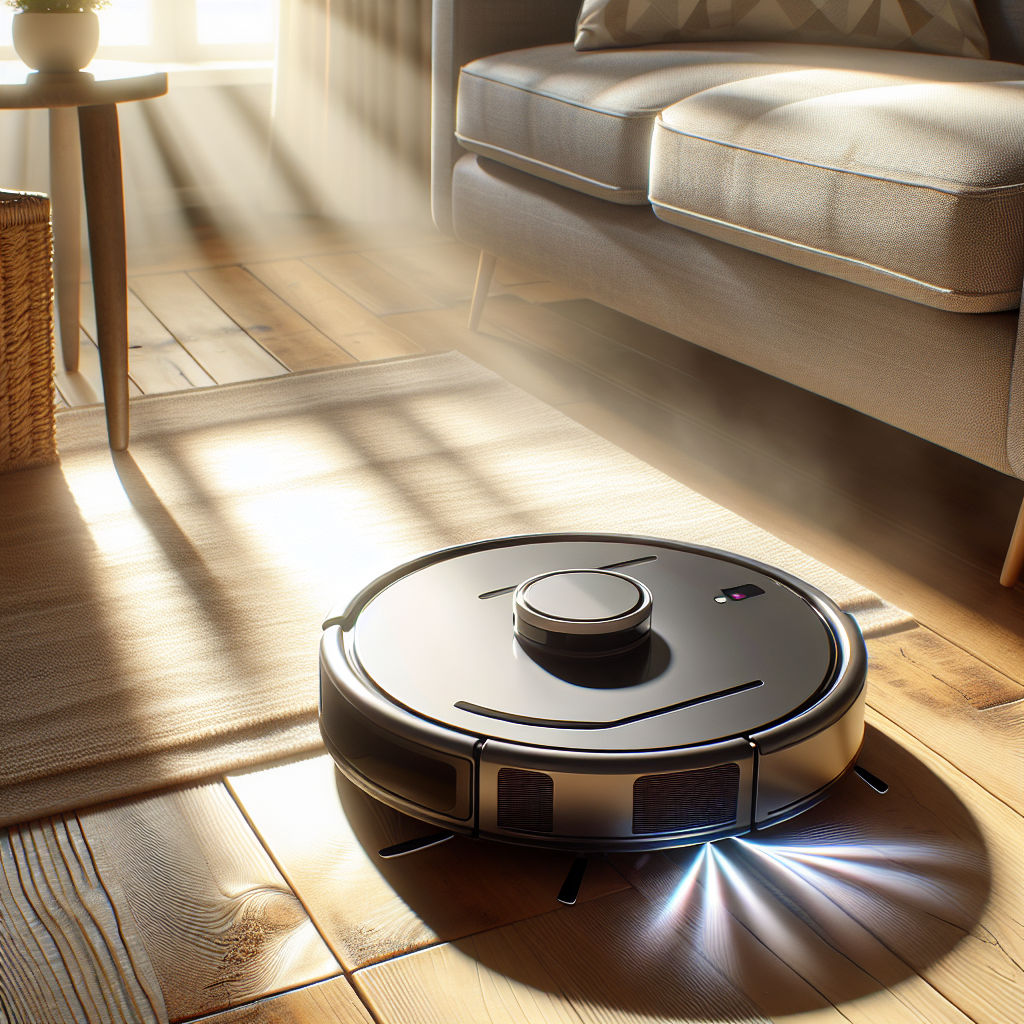Have you ever wondered why dust seems to magically reappear on your furniture even after you’ve just cleaned? If you find yourself constantly dusting and asking, “Where does dust come from?” or “Why is my house so dusty?”, you’re not alone! In this article, we’ll dive into the surprising origins of household dust, reveal why some homes are dustier than others, and share tips for banishing dust with modern solutions like budget-friendly robot vacuum cleaners.
Summary
- Learn where household dust actually comes from.
- Discover why your home might be dustier than others.
- Find out practical tips—and the latest cleaning solutions—to keep dust at bay, such as using affordable robot cleaners from RoboMaidz.
What Exactly Is Household Dust?
Before we explore where dust comes from, let’s define what it actually is. Household dust is a mix of tiny solid particles that collect on surfaces. It’s not just dead skin cells (contrary to popular belief) but includes a wide variety of both indoor and outdoor materials.
- Dead skin cells and hair from people and pets
- Textile fibers from carpets, furniture, and clothing
- Dirt and pollen tracked in from outside
- Paper fibers from books, tissues, and paper products
- Mold spores, bacteria, and dust mites
- Microscopic debris from cooking, candles, and electronics
Where Does Dust Come From?
Dust has multiple sources, both within your home and from outside. Understanding its origins can help you manage it more effectively.

Indoor Sources of Dust
Most household dust is generated indoors. Some common internal sources include:
- Shedding: Humans shed millions of skin cells daily, and pets shed fur and dander.
- Textiles: Fabrics and carpet release fibers every time they are used or vacuumed.
- Cooking: Smoke, grease, and microscopic debris from stoves and ovens become airborne.
- Paper and Upholstery: Books, tissues, mattresses, and furniture break down over time.
Outdoor Sources of Dust
Outdoor particles can easily drift or be carried indoors:
- Soil and Pollen: Brought in on shoes, pet paws, windows, and doors left open.
- Pollutants: Exhaust fumes and construction dust can settle inside via air currents.
- Plant Debris: Tiny fragments from grass, trees, and flowers enter through open windows.
Why Is My House So Dusty?
If you notice a persistent layer of dust in your living spaces, you may wonder, “Why is my house so dusty compared to others?” Several factors contribute to the dustiness of your home.

1. Location and Surroundings
Homes located near busy roads, construction sites, or farmlands typically experience more dust due to outdoor particles entering via doors, windows, and ventilation.
2. Air Leaks and Poor Insulation
Even tiny gaps in windows, doors, or walls let outdoor dust inside. Old or poorly insulated homes are usually dustier.
3. Flooring and Upholstery Choices
Homes with lots of carpets, rugs, drapes, and fabric furniture hold onto dust particles more than homes with hard floors and simple window coverings.
4. HVAC and Air Filters
Heating and cooling systems with dirty or outdated filters spread dust rather than capturing it. Clogged air ducts also circulate particles.
5. Poor or Infrequent Cleaning Habits
Regular cleaning is key! Neglecting to vacuum, mop, or dust allows dust to accumulate on surfaces, under furniture, and in corners.
How to Reduce Dust in Your Home
Although you can never completely eliminate dust, you can minimize it significantly by following these tried-and-true strategies:
1. Keep Doors and Windows Closed
Especially on windy days or during pollen season, try to keep your home as sealed as possible. Weatherstripping can help prevent gaps.
2. Use Doormats and Take Shoes Off Indoors
Trap dirt and debris at the entrance by using doormats and removing shoes upon entering your home.
3. Clean Regularly and Thoroughly
Regular dusting, sweeping, and vacuuming is essential. Use damp cloths for dusting to prevent particles from becoming airborne. For busy households, investing in a quiet robot vacuum cleaner can help you stay on top of dust with minimal effort.
4. Upgrade HVAC Filters and Clean Ducts
Change your HVAC filters every 1-3 months and have your air ducts professionally cleaned every few years to limit dust circulation.
5. Limit Fabric Surfaces
Reduce the number of rugs, drapes, and fabric furniture to lower dust collection sites. Wash bedding and soft furnishings frequently.
Modern Solutions: Smart Robot Cleaning Technology
Smart cleaning robots, like those from RoboMaidz, are game-changers for managing dust—especially in homes where time, energy, or mobility is a concern. For example, with robot vacuum cleaners on sale, maintaining cleaner floors every day is more affordable than ever. Some models are specifically designed as Best Robot Cleaner for Wood Floors, ensuring efficient cleaning without scratching floors or missing dust in corners.
For glass and walls, a robotic window cleaner can tackle hard-to-reach dust and leave windows spotless. With advancements in technology, even families on a budget can find great robot vacuums under $100 that significantly cut down on home dust.
Conclusion: Keep Dust at Bay with Knowledge & Smart Tools
Now that you know where dust comes from and understand why your house might be dustier than your neighbor’s, you’re equipped to battle dust more effectively. Simple changes—like improved cleaning routines and sealing air leaks—combined with affordable smart cleaning solutions from RoboMaidz, can help create a fresher, healthier home for your family. Ready to dust less and live more? Explore the range of robot cleaner for sale today!






